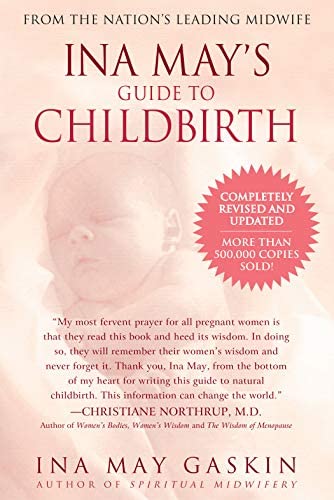|
Ina May’s Guide to Childbirth, Updated Edition
By Ina May Gaskin Published in March 4 2003 400 Pages Thibault’s Score: 4/5 It’s been several months since my last book review - but I have a good excuse. My wife is pregnant, and that has preoccupied much of my mental focus. She recently read this book, and told me to read it too. Ina May Gaskin is a midwife who has helped thousands of women give birth over the course of her long career. She decided to write this book to gather all of the lessons which she had learned over the course of her protracted career in one place. The first half of the book is a collection of stories of different women who have all given birth; under very different circumstances. Many of the women had easy pregnancies. Others had extremely difficult pregnancies; and yet others gave birth to babies who died immediately. Some had abortions; others had irresponsible sex and became single moms; and some needed C-Sections. Going through the chronology of the birth experiences of different women helped my wife, who is now pregnant. After reading that part of the book and also finding it helpful, I decided to read the rest. The next quarter of the book is a “cookbook” style list of practical advice about various topics. It covers birth positions, ways to negotiate with hospital staff, and advice on whether or not mothers should seek medication. Because I am male and will never be pregnant, I found this part of the book to be less relevant. Finally, the last quarter of the book focuses on several topics that should be of universal interest - even to non parents. Ina May discusses how modern technology is creating many new risks that pregnant mothers did not face in the past. First, she points out that many historical midwives had very good success rates. My own studies of history seem to corroborate this - even in the early 1800s, cases of mothers dying during birth were very extremely rare (despite misconceptions created by corporate pop culture). Then, she shows how the modern medical system removes many key parental rights. Mothers are cajoled and scared into taking drugs and using medical procedures that create unnecessary risks. Overmedicalization means that cesarean rates are very high - as high as 80% in some countries - despite the fact that only between 1% and 3% of mothers really need them. Finally, some drugs are known to cause extremely serious side effects to both babies and mothers. Small things have a huge impact. Many hospitals prevent women in labor from eating or drinking - despite overwhelming evidence that eating and drinking makes the process of giving birth much easier. This is done for purely historical reasons, when in the early 20th century, doctors sometimes gave women chloroform. Women using chloroform were at risk of vomiting, and suffocating. Although chloroform is no longer used, the old custom has remained. Many hospitals also prevent women from moving. Some go as far as forcing mothers to lie down. Lying down is practical due to the physical layout of most hospitals; but most women cannot comfortably give birth lying down. Instead, there is significant evidence that suggests that women give birth more safely when moving. The most important conclusion that the book draws is that the safest way to give birth is the most natural. Giving birth is not a medical procedure - it is a natural bodily function. Very few women actually need any drugs or treatments; and these often do more harm than good. Looking at the last part of the books through the lens of economics has let me draw some conclusions which Ina May does not spell out. On the corporate side of healthcare, insurance companies are very risk averse. Proving that a drug caused serious side effects can be difficult. By contrast, if a mother dies during childbirth, the cause of death is obvious. Insurance companies choose to shift blame and liability away from themselves, always opting for routes of treatment that cause less direct harm. The actual amount of harm is economically irrelevant as long as the assignment of blame is difficult. All Western healthcare systems are at least, partially, socialistic. This means that governmental medical standards organizations have a disproportionate say. In a free market, mothers have all of the spending power. Under socialism, the government must make decisions about which kind of childbirth it will subsidize and which it will not. As a result, independent practitioners like Ina May Gaskin are often underfunded and hampered by rules and regulations. Although Ina May Gaskin does not talk at all about politics - to me the situation seems quite clear. Our society has created an extremely dangerous environment for women who want to give birth. Small details have a huge impact - for example women need to be free to move or eat. Although death or the injury of infants is rare, it could be even rarer. Because of our current system, many women experience Cesarians, tearing, pain, or other injuries for no good reason. I recommend this book to all pregnant women or anyone who has a pregnant wife, daughter, or sister in their life.
0 Comments
Leave a Reply. |
Thibault SerletMost of my articles are book reviews, but I also write about many other topics. Archives
December 2023
Categories |

 RSS Feed
RSS Feed